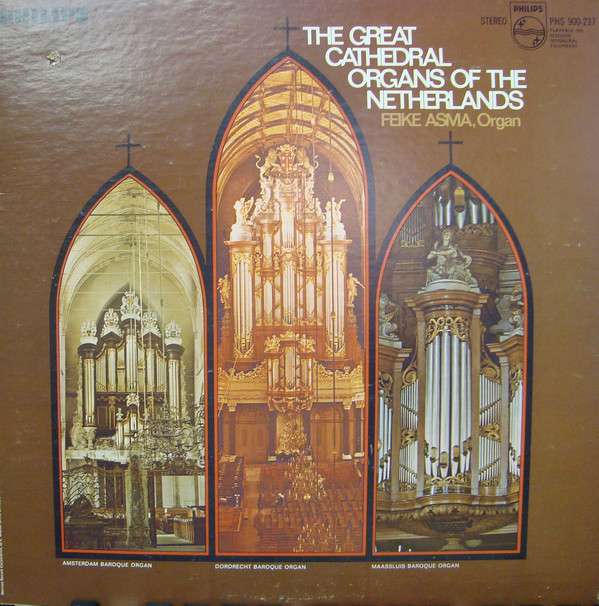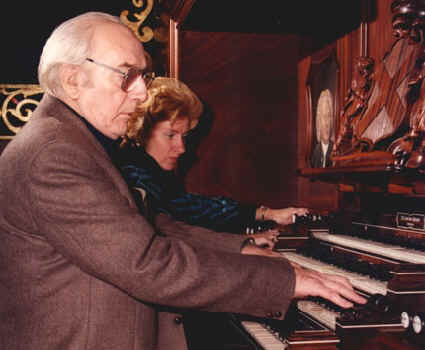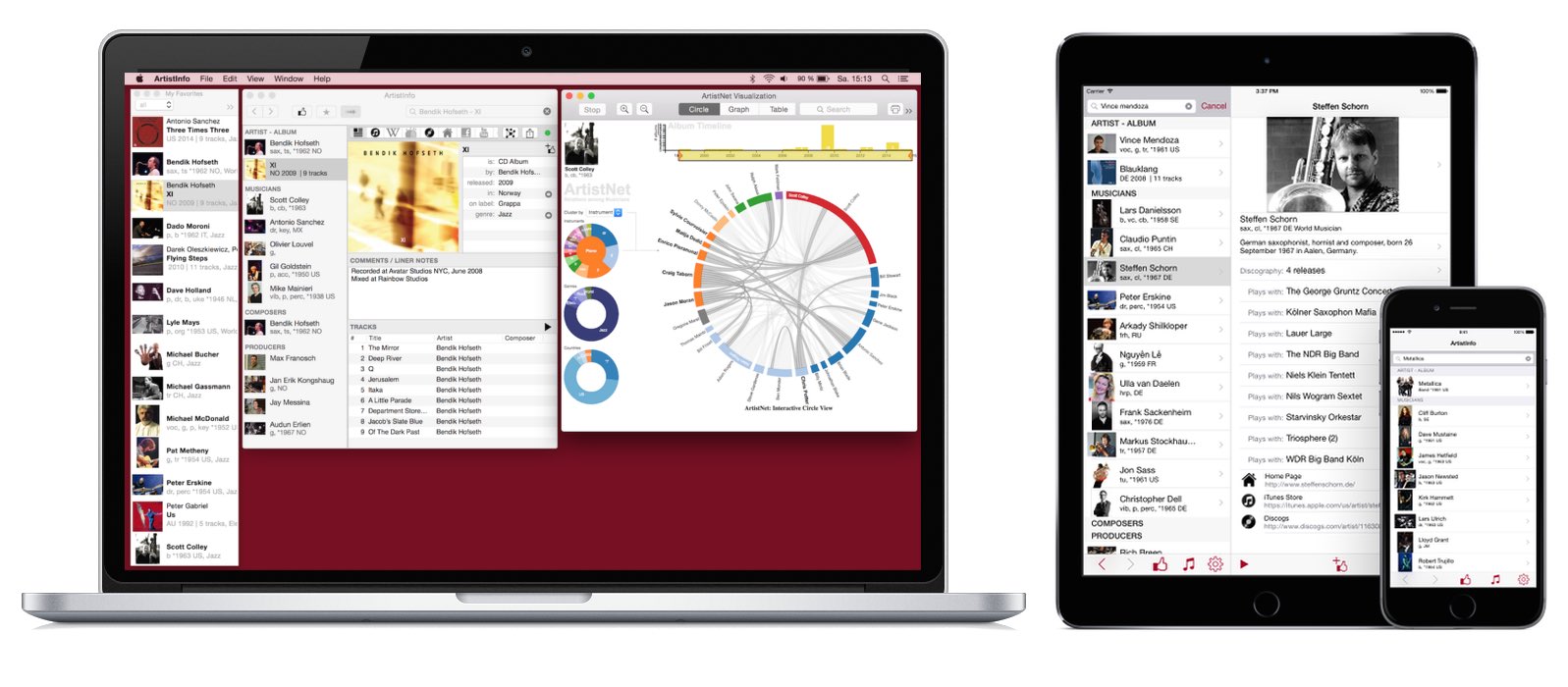
Feike Asma
The Great Cathedral Organs Of The Netherlands
Album US on Philips label
Classical (Baroque)
"The organ of the Great Church in Dordrecht dates from 1859, when it was built by W.H. Kam from Rotterdam. Notwithstanding the predominance of Romantic stop, the seventeenth and eighteenth-century traditions are decidedly represented and can be heard in this mighty cathedral organ. This organ is not merely a classically oriented instrument, but also has an unmistakable Dutch respectability. The grandiose baroque organ in the Great Church at Maassluis was installed in 1732 by Rudolph Garrels, prominent in the famous German organ building school of the Schnitgers. As the years passed, it's registers and sound were adapted to the ideas of the various organists who played the instrument. In 1938 the instrument was radically changed and romanticized in such an way that the original Garrels sound was all but obscured. It was owing to the Dutch Bureau of Historical Monuments, led by the famous organ expert, Dr. H. L. Oussoren, that in 1962 the original Garrels stop list with some extensions, as well as the original baroque sound, were restored. The organ of the Oude Kerk in Amsterdam is unquestionably the aristocrat among Dutch organs. It was built in the years 1724-1726 by Christian Vater (Hannover), and was restored and completed in 1739 by Johann Caspar Müller (The Hague), a brother of Christian Müller, the builder if the organ of St. Bavo's Church in Haarlem. Since that time, generations of organ builders have worked on this exceptional instrument, but it was the great Christian Gottlieb Freidrich Witte who harmonized the pipes in such a way as to obtain the most impressive sound. In Feike Asma's opinion the instrument of the Oude Kerk in Amsterdam is still the best preserved baroque organ in the Netherlands. It has become famous all over the world and it's equal is nowhere to be found. Although the three "families" of organ pipes - diapasons, flute stops and reeds - are worldwide, the different organ building schools have produced their own characteristic varieties. Therefore it is impossible to translate literally the names of the Dutch stops and we give here the original stop lists of the three organs:" (followed by the original stop lists of the three organs). A product of Mercury Record Productions, Inc. Printed in U.S.A.
Musicians
 | Feike Asma org, 1912-1984 NL organ, album by |
Album Tracks
| No | Title | Artist | Composer | Duration |
|---|---|---|---|---|
| 1 | Amsterdam Baroque Organ | Feike Asma | ||
| 2 | Bach: Toccata And Fugue In D Minor | Feike Asma | Johann Sebastian Bach | 9:57 |
| 3 | Bach: Toccata In F | Feike Asma | Johann Sebastian Bach | 9:26 |
| 4 | Dordrecht Baroque Organ | Feike Asma | ||
| 5 | Franck: Piece Heroique | Feike Asma | César Franck | 8:40 |
| 6 | Franck: Chorale No. 2 | Feike Asma | César Franck | 12:57 |
| 7 | Maassluis Baroque Organ | Feike Asma | ||
| 8 | Reger: Fugue, Op. 127 | Feike Asma | Max Reger | 10:45 |
